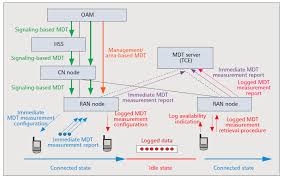Everything About WMTS: The Wireless Medical Telemetry Service
telcomatraining.com – WMTS (Wireless Medical Telemetry Service) is a critical technology in the healthcare industry that facilitates the wireless transmission of medical data, enhancing the efficiency and accuracy of patient monitoring. WMTS enables healthcare providers to remotely monitor a patient’s vital signs, making it possible for doctors and medical professionals to access real-time data without the need for physical contact. This is especially important in emergency situations, chronic illness management, or remote care settings, where continuous monitoring is essential for timely intervention and patient well-being.
The Role of WMTS in Healthcare
The primary function of WMTS is to allow the secure, wireless transfer of medical data from monitoring devices, such as ECG machines, blood pressure monitors, and other patient sensors, to a central system for analysis and review. Unlike traditional wired systems that rely on physical connections, WMTS provides greater flexibility, convenience, and mobility, ensuring that medical data can be transmitted over long distances without compromising the quality or integrity of the information.
This wireless capability ensures that healthcare providers have immediate access to patient data, whether in a hospital room, at a remote clinic, or in a home care setting. The use of WMTS for remote patient monitoring is a growing trend, particularly as telemedicine and digital health services continue to expand globally.
Key Benefits of WMTS
- Real-time Data Transmission: WMTS enables the transmission of live medical data, providing healthcare professionals with real-time updates on a patient’s condition. This is especially critical in acute care scenarios, such as intensive care units (ICUs) or emergency rooms (ERs), where every second counts.
- Enhanced Mobility: One of the most significant advantages of WMTS is the mobility it offers both patients and healthcare providers. Patients can move freely without being tethered to bulky, wired equipment, which significantly improves their comfort and quality of life. Healthcare professionals can also access data remotely, allowing for quicker decision-making and better patient management.
- Cost Savings: By reducing the need for physical infrastructure and enabling remote monitoring, WMTS can help lower healthcare costs. Hospitals and clinics can minimize the number of in-person visits for routine checkups, reducing both administrative costs and patient transportation fees.
- Improved Patient Outcomes: Continuous monitoring through WMTS enables healthcare providers to detect early signs of health deterioration. This proactive approach allows for timely interventions, leading to better patient outcomes and reduced hospital readmissions.
- Patient Privacy and Security: WMTS incorporates encryption and secure communication protocols to protect patient data during transmission. This is crucial in meeting the standards set by healthcare regulations, such as HIPAA (Health Insurance Portability and Accountability Act), ensuring that sensitive patient information remains private and secure.
The Technology Behind WMTS
WMTS operates on a dedicated frequency band in the radio spectrum, typically in the 608 to 614 MHz range in the United States. This band is allocated by the Federal Communications Commission (FCC) to ensure that the signals used for medical telemetry do not interfere with other wireless communication services. WMTS is specifically designed to be robust and reliable, providing uninterrupted service even in areas with heavy wireless traffic.
Wireless medical telemetry devices connected to the WMTS network use short-range radio signals to transmit vital sign data to a centralized receiver. These devices are designed to operate at low power, reducing the risk of interference with other wireless systems while maintaining a high level of accuracy in data transmission.
Applications of WMTS
WMTS is used in a variety of medical settings, from hospitals and clinics to home care and remote patient monitoring. Some of the most common applications include:
- Cardiac Monitoring: Patients with heart conditions can benefit from continuous ECG monitoring, allowing healthcare providers to track heart rhythm and detect abnormalities that could indicate a life-threatening issue.
- Chronic Disease Management: For patients with chronic conditions such as diabetes, hypertension, or COPD, WMTS allows for ongoing monitoring of critical health metrics, helping healthcare providers adjust treatments as needed.
- Emergency and Critical Care: In emergency situations, where quick decision-making is crucial, WMTS enables the real-time transmission of vital signs from ambulances or remote locations, allowing doctors to prepare for patient arrival.
- Home Health Care: WMTS enables patients to be monitored in the comfort of their own homes, reducing hospital stays and improving overall quality of life for individuals requiring long-term care.
Conclusion
WMTS, or Wireless Medical Telemetry Service, plays a crucial role in modern healthcare by enabling the secure, real-time transmission of patient data. Its benefits include improved patient mobility, cost savings, better patient outcomes, and enhanced data security. As healthcare continues to evolve, WMTS will remain a vital component in telemedicine and remote patient monitoring, paving the way for more efficient, accessible, and responsive healthcare services across the globe.







